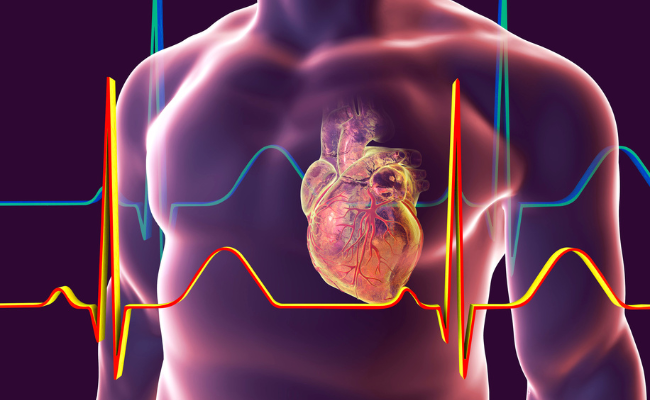How to Treat Nitroprusside?
- December 12, 2023
- No Comments
What is Nitroprusside?
Nitroprusside, identified as a nitrovasodilator within the realm of cardiovascular medications, is a crucial asset in emergency situations dealing with hypertensive crises, congestive heart failure, and acute heart failure. Operating through potent vasodilatory mechanisms, it effectively relaxes and widens blood vessels, promptly reducing blood pressure. This class of drugs, known for its capacity to release nitric oxide (NO) upon metabolism, defines a category recognized for its potent vasodilatory properties. Nitroprusside, as a direct-acting vasodilator, is strategically employed to manage hypertension, induce controlled hypotension for minimizing postoperative bleeding, and address acute heart failure.
Why is Nitroprusside Used?
The primary indication for the use of nitroprusside is hypertensive emergencies. These emergencies necessitate swift intervention to prevent severe complications such as stroke, heart attack, or damage to vital organs. When blood pressure reaches dangerously high levels, the risk of immediate harm becomes substantial, and nitroprusside's ability to rapidly lower blood pressure is crucial in mitigating these risks.
In addition to hypertensive crises, nitroprusside is employed in the management of acute heart failure. In cases where the heart is struggling to pump effectively, leading to congestion and compromised cardiac output, nitroprusside can alleviate the strain on the heart by dilating blood vessels, reducing the overall workload on the cardiovascular system.
How Does Nitroprusside Work?
- The mechanism of action of nitroprusside hinges on its conversion to nitric oxide (NO) in the body. Nitric oxide is a signaling molecule with potent vasodilatory properties. Once released, NO activates the enzyme guanylate cyclase, leading to an increase in cyclic guanosine monophosphate (cGMP). Elevated cGMP levels result in the relaxation of smooth muscle in blood vessels, promoting vasodilation.
- The vasodilatory effects of nitroprusside translate into reduced peripheral vascular resistance, allowing blood to flow more easily through the vessels. This reduction in resistance lessens the workload on the heart, contributing to the rapid and profound lowering of blood pressure. The speed at which nitroprusside acts is particularly advantageous in emergency situations, where immediate intervention is paramount.
Treatment Solution: Administering Nitroprusside
- The administration of nitroprusside is exclusively intravenous, reflecting its potent and fast-acting nature. This route allows healthcare providers to have precise control over the dosage and ensures a rapid onset of action. Careful titration of the dosage is crucial, considering the potential for excessive drops in blood pressure and related complications.
- Continuous monitoring of vital signs, including blood pressure, heart rate, and oxygen saturation, is imperative during nitroprusside infusion. This vigilant oversight helps healthcare professionals adjust the dosage in real-time, optimizing the therapeutic effects while minimizing the risk of adverse reactions.
Benefits of Nitroprusside Treatment:
- Rapid Blood Pressure Reduction: Nitroprusside's most notable benefit is its capacity to achieve swift and significant reductions in blood pressure. In hypertensive emergencies, where time is of the essence, this rapid effect can be life-saving. By quickly normalizing blood pressure, nitroprusside mitigates the immediate risks associated with elevated blood pressure, such as the potential for organ damage or cardiovascular events.
- Improved Cardiac Function: Through its vasodilatory effects, nitroprusside enhances cardiac function, particularly in cases of acute heart failure. By reducing peripheral vascular resistance, the heart faces less resistance in pumping blood, promoting improved cardiac output. This benefit is essential in situations where the heart is under duress, aiding in the optimization of oxygen and nutrient delivery to the myocardium.
- Emergency Situations: Nitroprusside's rapid onset of action makes it a cornerstone in managing acute cardiovascular emergencies. Whether it's a hypertensive crisis or acute heart failure, the ability to swiftly intervene and stabilize the patient's condition is paramount. Nitroprusside's efficacy in emergency situations underscores its importance in critical care settings.
- Precise Dosage Control: The intravenous administration of nitroprusside allows for meticulous dosage control. Healthcare providers can titrate the dosage based on the patient's response, ensuring that the therapeutic effects are achieved without inducing excessive hypotension. This precision is crucial in tailoring the treatment to the specific needs of each patient.
- Versatility in Cardiac Care: Nitroprusside's versatility lies in its applicability to various cardiac conditions. Its vasodilatory effects address both hypertensive emergencies and cardiac-related issues, offering a comprehensive solution in critical situations. This versatility enhances its utility in emergency departments and intensive care units, where diverse cardiovascular challenges may arise.










.jpg)
Comments (0)
No comments yet